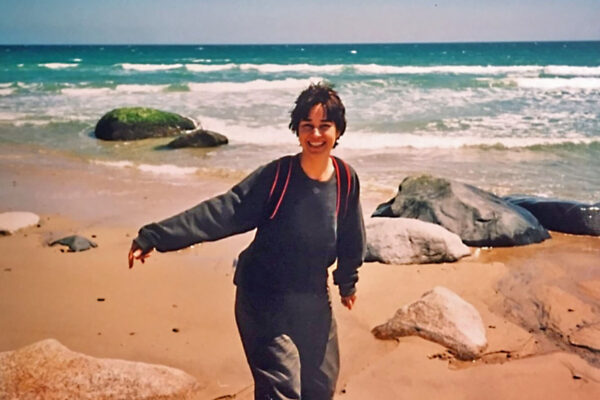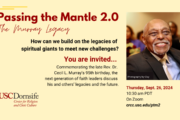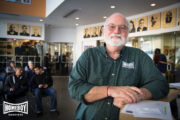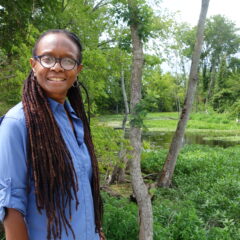This radio documentary was originally published by KALW’s The Spiritual Edge, with the support of CRCC’s global project on engaged spirituality.
To hear this and other profiles, subscribe to The Spiritual Edge podcast in your favorite podcasting app, including Apple podcasts, Spotify or Google Podcasts. Find out more on The Spiritual Edge website.
Since she was little, Dianna Mae Ortiz spoke about wanting to become a nun. She entered the Ursuline order at 17 and trained to teach small children.
Her desire to be a missionary in Latin America brought her to an indigenous Maya village in Guatemala while the country was still in the throes of a bloody civil conflict that was to take more than 200,000 lives before it ended in 1996.
Some years into her stay in the country, in November 1989, Guatemalan military members kidnapped, raped and tortured her. Ortiz said a man who appeared to be an American was in her torture chamber. For many years, she sought justice and truth from the U.S and Guatemalan governments, and felt betrayed by both.
“She came across as fragile, but she was very strong and very spiritual,” said people who knew her.
Sister Dianna put it this way: “The miracle of my life is that out of unspeakable horror came a new mission in life…”
In 1999, on the 10th anniversary of the ordeal that was to mark her life, I traveled to Guatemala to investigate why she had been abducted. What I discovered was that Sister Dianna had taken an active role in advocating with the military to stop the forcible recruitment of young indigenous men in the community of San Miguel Acatan, in the province of Huehuetenango.
The church’s sacristan, Chico Martin said: “We remember…she started the youth ministry and helped the young people a lot during the time of the violence. She supported the young men who were forcibly recruited into the army.” After 20 years of living in Guatemala, it’s still my theory that in attempting to work with the poor and indigenous, the brown-skinned. Mexican American Dianna came up against the anti-Catholic, racist, and misogynistic power structure that continues to control Guatemala to this day.
At the time of her release from torture and military custody, Ortiz had been told her imprisonment had been a case of mistaken identity — that the real target had been a guerrilla leader named Veronica Ortiz Hernandez, who looked nothing like her.
For years, Sister Dianna Ortiz attempted to get to the truth of her kidnapping and torture, all the while encountering resistance, and even attempts to smear her from the the Guatemalan and U.S. governments. “I was labeled a liar, a crazy woman…even that I was a political strategist who was trying to get Congress to cut off U.S. aid to the Guatemalan military,” Ortiz recalled in testimony during a human rights trial in 2002.
Medical records note that during her torture, her back was burned with cigarettes 111 times; she was gang raped and dropped into a pit with rats and human bodies. She was even forced to participate in the murder of another woman in the torture chamber.
The ordeal tested Sister Dianna’s faith: “If God were so interested in me,” she asked, “then why the burnings, the gang rapes, and all the other horrors?”
Healing for Sister Dianna, as for most survivors of torture, was a very long process. So was regaining her faith. For many years, she struggled with trauma, pain, and questions: “How was I to go on living when my life had been destroyed?” she asked, adding that she “…yearn(ed) to be free of memories, to be free of fear, but torture’s ghost walks with us every single day of our lives, reminding us that the past is not gone, that the past will always be, and without a moment’s warning…can trigger a memory for us.”
Her healing “involved a lot rebuilding,” said her friend Pat Davis, also the co-writer of Ortiz’ memoir, “The Blindfold’s Eyes: My Journey from Torture to Truth.” Ortiz had to “rebuild a sense of what God is …and how it is that God can allow these horrible things to happen.“
As part of her healing, Sister Dianna learned a lesson from the parable of Jesus and the loaves and fishes: “Jesus accepted what there was, five loaves of bread and two fishes offered by a boy. He didn’t complain or despair. He gave thanks to God for them, however insufficient they seemed. And he started passing them out.”
For the wounded nun, this Biblical passage contained a message to guide her life: “Take what you have in an attitude of faith…and it will be enough…it will be more than enough.” Gradually Ortiz, whose torture obliterated her memory, came to understand that “As Graham Greene says, ‘Life is absurd, therefore, there is always hope.’”
during her stay at the Marjorie Kovler Center for Survivors of Torture in Chicago, Ortiz also learned much about the power of community — especially through interactions with people who’d suffered similar horrific experiences. “As time passed,” she recalled, I forgave God for not working some dramatic miracle undoing my past. I learned that God was indeed working a quiet unobtrusive miracle, healing me through other people — through small gestures, smiles, hugs, and kind words. What we had to offer each other in that house in Chicago had begun to counteract the power of the torturers’ smirks and punches.”
Her friend Pat Davis recalled: “I don’t think she completely healed, but she ended up being a much more whole human being than many people who haven’t been through this…The pain didn’t go away, the memories didn’t go away, she never regained who she had been before the torture, but she became another beautiful, loving creature.”
Sister Dianna Ortiz used the moral perspective informed by her terrible ordeal to guide her spiritual and social justice vocation for the rest of her life — through her work with the Guatemalan Human Rights Commission USA and other human rights groups: Pax Christi, and especiallyTASSC, the Torture Abolition and Survivors Support Coalition. She established that coaliton, and it remains the only U.S. organization founded by and for survivors of torture.
Pat Davis said Sister Dianna was always aware of her privilege as a U.S. citizen, “…that even in (Guatemala), she could leave because she had a U.S. passport, other people did not have that luxury… Her faith was to walk with the people, and with the poor.”
Ortiz expressed her commitment to her work with survivors of torture this way: “ It’s very important that you understand that each time I speak out, it’s not about an American nun who was tortured…It is about every mother whose son or daughter is disappeared. It’s about every person who has been tortured physically, emotionally, sexually… it’s about working collectively to try to prevent one more person from being tortured.”
Sister Dianna Mae Ortiz died of cancer on the wintry Friday of February 19, 2021 at the Assisi community in Washington, D.C.* They say the snow she loved started just after she took her last breath.
“She could have been a very bitter woman…and not done anything and just felt sorry for (herself), but she did the exact opposite of what someone would do …in her situation and I’m so happy she’s at peace now,” said her friend and colleague, the indefatigable 95-year old Sister Alice Zachmann. Sister Alice added, “Now we don’t pray for Dianna, we pray to Dianna,” — acknowledging this woman’s saintly qualities. “I think she’s already a declared saint,” said Sister Alice, “and many other people have said the same thing.”
The lessons of Sister Dianna Ortiz’ life continue to inspire. She came to believe that, as in her life, God has a plan for everyone. In one of her speeches, she declared: “ pray that God’s plan for you is as clear as God’s plan has come to me. And that …God’s plan for you, will rest on this credo: ‘Thou shall not be a victim. Thou shall not be a perpetrator — and above all, thou shall not be a bystander.’”
Dianna Ortiz, presente!
Listen to the full story on TheSpiritualEdge.org.
*Correction: The audio version says she died at her Ursuline Mother House in Kentucky. She was in hospice at the Assisi community in Washington, D.C., when she passed.
Maria Emilia Martin is a journalist fellow with the Spiritual Exemplars Project.









